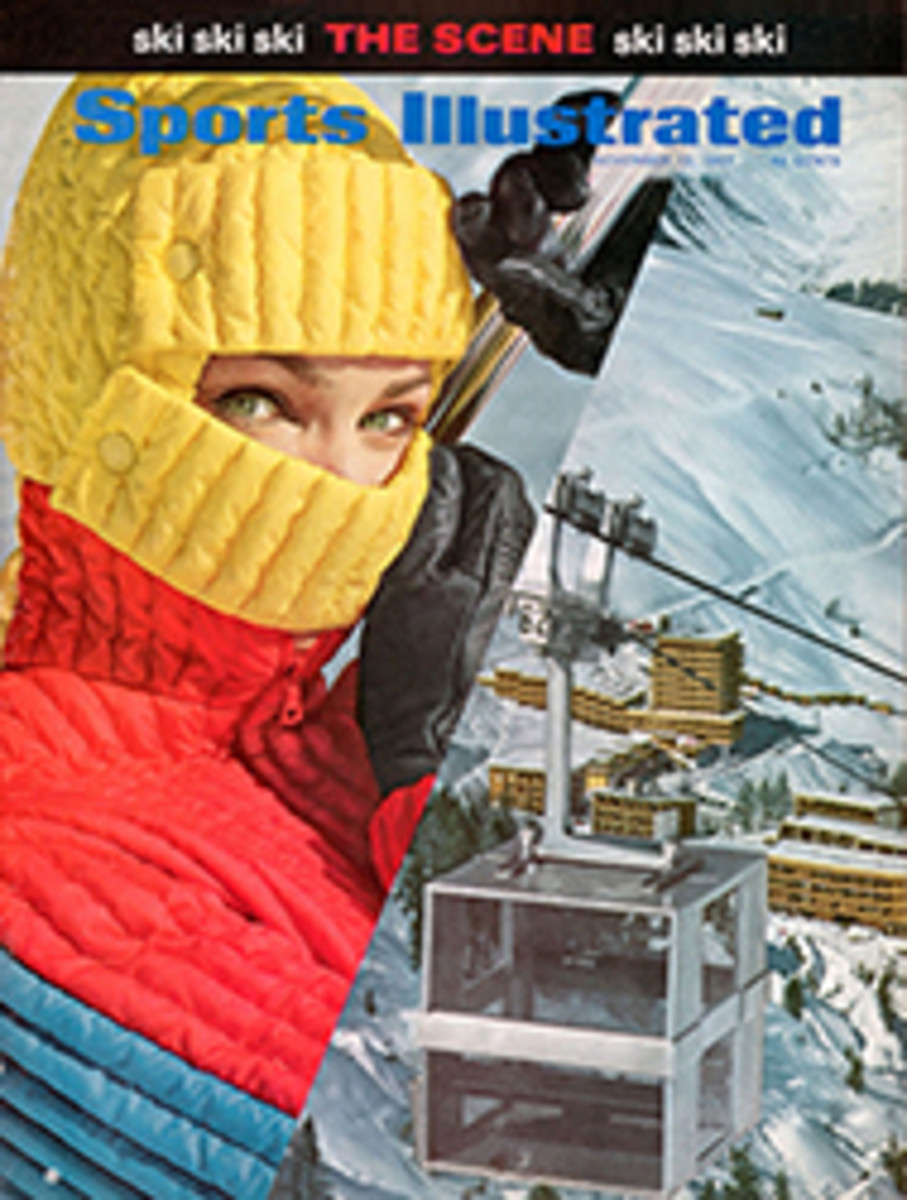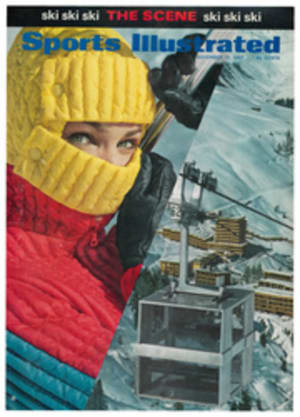
Oklahoma sticks it right to their mustache
It was springtime in Oklahoma and, like the wheat and barley sprouting from Guymon in the north to the Red River in the south, life was new and fresh and full of promise on the campus of the University of Oklahoma. The previous fall, in his first year as head football coach, young Jim Mackenzie had won six of 10 games, including victories over Texas and Nebraska. Before the season was over, the Sooners were reminding people of those splendid Oklahoma teams of the '50s, the teams that Bud Wilkinson dressed in tearaway jerseys and low-cut shoes and took to a bowl almost every New Year's. Yes, under Jim Mackenzie the Sooners looked like they were on the way back until—right in the middle of spring practice—their 37-year-old coach came home from a recruiting trip one night and dropped dead of a heart attack.
"We were stunned," remembers Chuck Fairbanks, the 34-year-old assistant who succeeded Mackenzie. "We walked around in a daze. But then we called the team together and just talked. We decided that the best thing we could do was work together and try to realize Jim's hopes."
Now—only six months later—the Sooners are doing that and more. In six games they have lost only to Texas—by two points after clearly outplaying the Longhorns for a half—and they lead the country in defense against scoring, having given up an average of 2.7 points per game. Last Saturday, in the most important game of the season for both teams, Oklahoma overwhelmed ninth-ranked Colorado 23-0 and in the process amazed Fairbanks. "Frankly, I didn't think we could keep Colorado from scoring," he said afterward.
Nobody did. The Buffaloes, as big and strong as their name suggests, had won five of six games, averaging 21.5 points a game. They could run and they could pass, and there was the distinct possibility that they might muscle the Sooners right off Owen Field and onto the surrounding plains.
On the day before the game Fairbanks sat in his office, wearing a maroon sweater (Oklahoma red is actually maroon, and Fairbanks rarely misses an opportunity to wear the color in some way). "It has been difficult," he said. "Jim was admired by everybody in Oklahoma. I've just tried to be myself. Fortunately, Jim and I thought a lot alike. We both wanted the same things for Oklahoma."
What Mackenzie wanted—and what Fairbanks is getting—is a team that swarms all over the field on defense and, when on offense, hugs the ball as if it were life itself. With a lanky 170-pound junior named Bobby Warmack running the attack, Oklahoma has driven 74 yards or more for touchdowns 10 times this year. Senior Ron Shotts and sophomore Steve Owens have alternated at tailback and gained 1,040 yards between them. Warmack will never be drafted as a pro quarterback, but he still has an arm strong enough to flick the ball with authority into opposing secondaries. He is 43 for 74 and 595 yards this year. Warmack, who comes from Ada, Okla., about 60 miles from Norman, lifted weights in high school in an attempt to build himself up, with an obvious lack of success. "I was just born skinny," he says, "but I'm as big as anybody when I get my pads on."
The Oklahoma defense is built around a 219-pound middle guard named Granville Liggins, who shaves his head and is a cinch for All-America. Liggins was hurt throughout 1966, playing only a quarter and a half against Notre Dame, but the Irish still voted him to their all-opponent team. Exceptionally quick, his mere presence in the middle of the Oklahoma defensive line allows the Sooners to stunt as few teams have in the past.
Despite its record, Colorado had been slowed by more than its share of injuries from the start of fall practice. Only once—for 30 minutes against Iowa State—was Coach Eddie Crowder able to get his four best backs in the game at the same time. Wilmer Cooks, the all-Big Eight fullback, stretched an Achilles tendon in fall practice and Tailback William Harris and Slotback John Farler had limped in and out of some games while missing others completely. Still the Buffaloes had managed to win their first five games, largely because of a stern defense and the development of a fine sophomore quarterback, Bob Anderson. The defense had squeezed Colorado past Nebraska 21-16, helped greatly by two pass interceptions; the following week, with five offensive starters out, the Buffaloes had been upset by Oklahoma State 10-7. But Colorado was still the team to beat for the Big Eight championship and a bowl berth.
On the afternoon before the game, Fairbanks sprung an emotional surprise on the Sooners. Gathering his team around him after a brief workout, he motioned to a tanned figure in a gray suit standing on the sidelines. "Men," Fairbanks said, "I want you to meet one of the greatest players in Oklahoma history—Billy Vessels."
Vessels, who won the Heisman Trophy in 1952, had flown up from Miami. He stood facing the half circle formed by the Sooners and said softly, "Fellows, I can't tell you how much it means to come back to Oklahoma and watch you in your biggest game. All I can say is that I'll be on the sidelines pulling for you. And, though I know Coach doesn't like to hear things like this, I'll be looking for you down South on New Year's."
The next day 62,000 homecoming fans filled Owen Field, and two critical plays occurred almost immediately. Oklahoma's Gordon Wheeler, punting from his 32, hurried the kick, and the ball carried only 11 yards. Colorado took over at the Sooner 43 and moved smartly through the Sooner defense—until it reached the 10. There, on fourth down and two, the Sooners held.
"That stand fired us up for good," said Guard Ken Mendenhall later.
"It hurt us terrible," said Cooks.
The Sooners, unable to move, were forced to punt again—and here came a genuine turning point. Wheeler took his time and lofted a high, floating spiral from his 18 all the way to the Colorado 25, where Charlie Greer took the ball and lost 10 more yards trying to return it.
"It sure felt good," said Wheeler of his tremendous kick, "but I owed it to the boss. I had to make up for the first one." "It had a fantastic effect on the game," said Fairbanks. "It turned the whole field around for us."
It did, indeed, for when a weak Colorado punt gave Oklahoma the ball at the Buffaloes' 23, the Sooners made it 3-0, Mike Vachon kicking his first field goal of the year. Oklahoma kicked off and moments later Bob Stephenson intercepted a pass and returned it to the Colorado 44. From there Oklahoma scored in seven plays, Owens going over from the four. By the time the Sooners had added their last two touchdowns in the fourth quarter, the crowd was streaming toward the exits.
"It's just like I pictured it," Warmack said later as he put on a blue button-down shirt and slipped an atrocious blue and gold tie under the collar. "When I was a kid, all I wanted to do was play for OU. I loved Bud Wilkinson, and after he left I hoped it would all be the same again someday. Now, I think it will be."
Granville Liggins was one of the last Sooners out of the locker room. "It was like they told us all along," he said. "Stick it right to their mustache, and they won't be as anxious to run at you next time."
Fairbanks was padding around in his bare feet, hoping to squeeze a shower in somewhere between the handshakes and congratulations. "This is a fine team and it will get better," he said.
Jim Mackenzie would have agreed.
PHOTO
COMING THROUGH HOLE AS WIDE AS OKLAHOMA, STEVE OWENS SCORES FOR SOONERS

